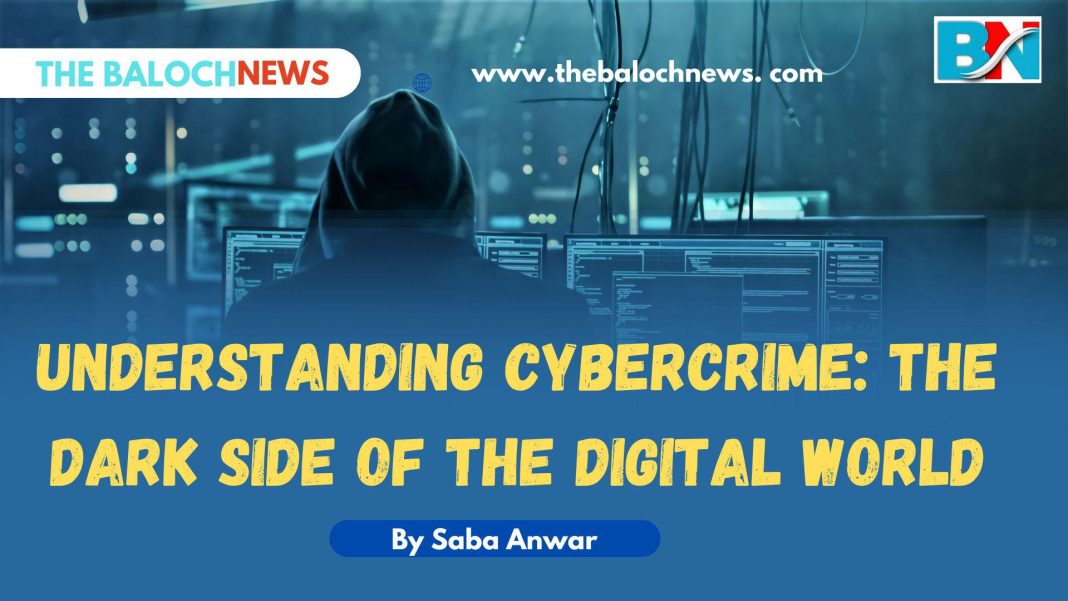The rise of cybercrime has brought about a growing concern regarding various types of frauds and scams. These criminal activities do not only lead to substantial monetary losses but also abuse victims emotionally and damage their trust and well-being. Social media has revolutionized the way we communicate, share, and interact. Platforms like Facebook, Twitter, Instagram, and LinkedIn have connected billions of people worldwide, allowing for historic levels of information exchange and social interaction. However, this connectivity has a darker side. The very features that make social media attractive also create opportunities for cybercrime.
This blog explores the various elements of cybercrime on social media, its implications, and measures to protect against it. With businesses, governments, and individuals relying heavily on digital platforms, cyber threats have escalated, leading to billions in financial losses worldwide.
Causes of cybercrime:
Cybercrimes are criminal activities carried out online. This type of crime usually does not recognize time or target, making anyone a potential victim. Therefore, you must be watchful. The objectives of cybercrime are quite diverse, ranging from only mischief to serious crimes that harm victims economically. In practice, these crimes can be committed by individuals or groups of people. The wrongdoers are typically experts in various hacking techniques, and these cyber crimes are often carried out from different locations at the same time. There are several factors that can make cybercrimes easier to occur. These factors are diverse, allowing for the possibility of attacks. Cyber criminals harness soft spots in systems, often through user error like weak passwords or clicking hurtful links or by targeting system weaknesses.
Merits and demerits of cybercrime:
Cybercrime offers both advantages and disadvantages, primarily related to its potential for both harm and invasion within the digital realm. Discussing the advantages and disadvantages of cybercrime requires a detailed understanding of its impact on society, technology, and security.
While the term “advantages” may seem unexpected when associated with crime, it refers more to the unplanned positive outcomes that arise as a response to cybercrime. The rise in cybercrime has heightened public awareness about the importance of cyber-security. It has led to better education on safe online practices for individuals and organizations, supporting a more security-conscious culture. Cybercrime can result in significant financial losses for individuals, businesses, and governments. This includes direct theft of funds, costs associated with fixing damaged systems, and loss of business due to downtime. Cyber attacks can damage the reputation of affected organizations, leading to a loss of consumer trust and confidence.
Salient features of cybercrime:
Cybercrime is characterized by its global reach, anonymity, speed, and the use of technology as both a tool and a target. Cybercrime can occur across geographical boundaries, making legal issues a major challenge in investigation and action. The speed of digital communication and exchange allows cyber-criminals to conduct crimes quickly and efficiently, often with large scale impact.
Cybercrime trusts on the constant evolution of technology, with criminals constantly developing new methods and techniques to exploit weak links. It often involves the theft, manipulation, or destruction of data, which can have serious consequences for individuals, organizations, and even national security. Cyber criminals target critical infrastructure like power system, communication networks, and financial systems, which can have devastating consequences for society.
The future of cybercrime
The future of cybercrime is likely to involve increased advanced and automation, driven by advancements in artificial intelligence and other emerging technologies. Cyber criminals will power AI for tasks like target selection, recon, and even the development of evil software. Attacks on critical infrastructure and the increasing reliance on IT devices will also become more prominent, potentially leading to physical harm and offline destruction.
Cyber criminals use AI to automate various stages of attacks, including recon, cyber attacks, and keyloggers development. This will make attacks more efficient, targeted, and difficult to detect. Cyber security awareness training for individuals and organizations will be essential to reduce the risk of social engineering attacks. Collaboration between public and private sectors, as well as international cooperation, will be crucial to fight cybercrime. The future of cybercrime is a dynamic and evolving landscape. Staying ahead of cyber criminals will require continuous innovation, collaboration, and a proactive approach to security.
The impact of cybercrime
Its outcomes can be really overwhelming, which can impact individuals with monetary setbacks and identity theft. For businesses, it can cause reputation damage and legal consequences. Furthermore, cybercrime has the potential to harm society’s economy, pose a threat to national defence systems, and increase online mobbing and harassment. Norton reports state that 55 million had to deal with identity theft in 2021, and this number is increasing rapidly. It’s no longer a question if you or your business will experience a cyber breach, but when. However, there are measures you can take to prevent cybercrime and protect yourself and your business. In this blog, let’s explore into the effects of cybercrime on individuals, businesses, and society.
The evolving Nature of cybercrime
Cyber criminals are becoming more complex, using advanced technologies like AI to enhance their attacks. This includes using social media and coded messaging for selection, coordination, and propaganda. Online protesters, motivated by a combination of activism and hacking, also play a role in this coming together. Cyber attacks are increasingly targeting critical infrastructure and essential services. Investing in cyber security professionals with the skills and knowledge to adapt to evolving threats is vital.
Side effects of cybercrime
Cybercrime has numerous side effects: like, you feel angry, upset or experience other strong emotions, Things suddenly fall apart for you, you show physical symptoms, you blame yourself thinking you should have done things differently, and you develop long-term problems such as depression or anxiety-related illness. Cyber attacks can lead to the loss of money or the theft of personal, financial and medical information. These attacks can damage your reputation and safety.
Preventing Cybercrime
Here is raising a question how to prevent cybercrime. First of all, use unique, complex passwords for each account; regularly update payment and financial apps, avoid links from unknown sources, download only from official app stores and make sure you update all your systems and applications and that you install an antivirus software and keep it up to date. Remember to use long and complex passwords that include numbers, letters and special characters.
Your children and other family members can accidentally remove or modify information, or even worse, accidentally infect your device, so don’t let them use the devices you use for work. United we stands against cyber threats, divided we fall to digital darkness.










